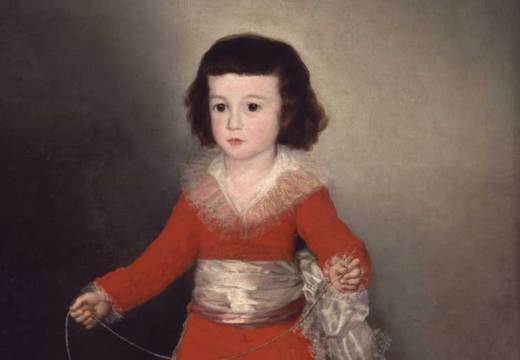‘“Marinetti was a Punk Poet” could have been a title of a Ramones track’, claims Pablo Echaurren (b. 1951), creator of a series of collages that playfully bring together Italian Futurism with punk rock, in order to revive the avant-garde with its own cut and paste aesthetic.
Echaurren’s combination of 20th-century rebels is most visually striking in Ones (2006) in which a 1976 image of the American punk band the Ramones, leaning nonchalantly against a wall, bleeds, by means of mangled photocopy, into a 1912 photograph of the Italian Futurist artists and the group’s leader F.T. Marinetti.
Marinetti also dominates the 2012 work Stereo and fragments of his words-in-freedom poetry are found in Scarabrrrrranng (1994) and Il poeta Marinetti (1995). Other collages include reproductions of art and writing by Umberto Boccioni, Carlo Carrà and Ardengo Soffici, all artists found in the Estorick’s permanent collection. Echaurren is very proud to be exhibiting here – ‘being alongside the masterpieces of Futurism certainly does not happen every day’.
Echaurren discovered Futurism in 1977, during the ‘Years of Lead’, a period of great social and political turmoil in Italy. Echaurren was then a member of the far-left group Indiani Metropolitani, who defined themselves as Dadaists and sought to abolish the difference between art and life. A faction of the group referred to Echuarren as a Futurist, an insult in their minds, but one that sparked an interest: ‘I decided to delve deeper into the subject and started to search out Futurist books. At that time the only Futurist books were the originals, the old ones. So I started as a collector, but soon I was hooked.’
Echaurren uses fragments of original copies of Futurist manifestos and journals in works such as Noi (2012), named after the Futurist journal it features. As a bibliophile, at first it was hard for him to cut up originals, but this soon changed. ‘The collages began to take their shape and so the past became the present. A present that gives new life to the reliquaries of the past. Futurism must be Futurist even at the cost of some iconoclastic acts. But then to be iconoclast is also a gesture of respect, of devotion.’
Bringing together Futurism and punk felt natural for Echaurren, who compares their desire to throw out the established order, which was inspirational for young people in the 1910s and the 1970s respectively. ‘I look to mix everything up, without distinguishing between “high” and “low”.’ Many works in this exhibition also feature fragments of Disney cartoons, with Daffy Duck appearing in History (2012) and Popeye and Olive Oyl in Otello e Desdemona (1995). The mixture of high and low is also found in his materials, alongside parts of his own collection he uses bits of paper collected from the street.
When founding Futurism in 1909, Marinetti said that it should be thrown into the wastebasket after a decade. Echaurren is certainly not the only contemporary artist who has rummaged through that wastebasket, but, as this small exhibition shows, he isn’t afraid to turn avant-garde iconoclasm in on itself.
‘Pablo Echaurren: Iconoclast’ is at the Estorick Collection of Modern Italian Art, London, until 18 May 2014.
Images courtesy Fondazione Echaurren Salaris.














![Masterpiece [Re]discovery 2022. Photo: Ben Fisher Photography, courtesy of Masterpiece London](http://zephr.apollo-magazine.com/wp-content/uploads/2022/07/MPL2022_4263.jpg)
‘Like landscape, his objects seem to breathe’: Gordon Baldwin (1932–2025)